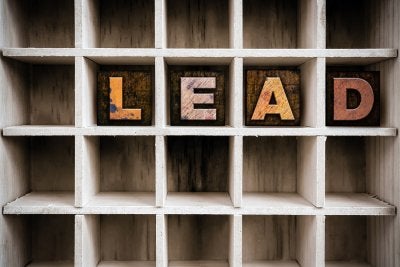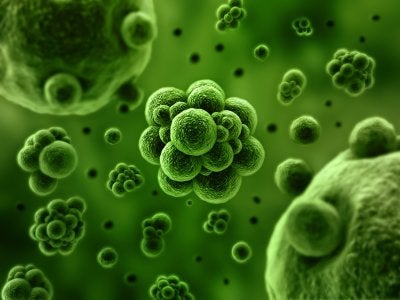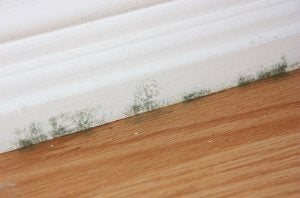-
Removing Lead-Based Paint
If you live in older home, it’s important that you make sure there are no traces of lead-based paint that can cause anyone in your family to become sick from lead poisoning. A full lead-based paint survey will identify remnants of lead-based paint in your home. After you receive confirmation of lead paint in your home , you will need to take steps to remove the paint in order to limit exposure. Although lead-paint removal is best left to a professional remediator, there are things you can to do eliminate the threat in your own home.
Watch this video to learn about the proper way to dispose of lead paint. You’ll learn about the personal safety equipment you should wear when removing lead-based paint, and how to safely dispose of lead paint after it’s been removed from your home. You’ll also learn about other steps you can take after discovering lead paint in your home, such as painting over with a specially-formulated encapsulation paint.
-
Understanding Lead Toxicity and Poisoning
Lead-based paint and lead-contaminated dust are the most common sources of lead poisoning in children and adults, despite the fact that such paints have been banned for residential use since 1978. If you live in an older residence, it’s recommended that you schedule a lead inspection in San Francisco to determine whether this toxic heavy metal is present inside your home. However, lead-based paint isn’t the only source of lead poisoning. To protect yourself and your family, read this short blog to learn more about lead toxicity and to recognize the signs of lead poisoning.
Signs and Symptoms of Lead Poisoning

Initially, and at small doses, lead poisoning can be hard to detect, especially in health children and adults. Because the most recognizable signs of lead poisoning usually don’t appear until dangerous amounts have accumulated inside the body, seek medical attention if you recognize the following chronic symptoms in yourself or your family:- Abdominal pain
- Mood disorders
- Constipation
- Muscle pain
- Headache
- Memory loss
- Hearing loss
- Sluggishness and fatigue
Lead Poisoning Risk Factors
Although lead is harmful to all humans at high enough doses and over long enough periods of time, there are certain factors that can increase one’s risk of becoming lead poisoned. Infants and young children, for example, are more likely to be exposed to lead than adults and absorb the heavy metal more easily. People who live in homes or apartment buildings that were built before 1980 are also at risk of prolonged exposure to lead through the remnants of lead-based paints.Lead Poisoning Prevention
Children and adults are most frequently exposed to dangerous levels of lead inside older homes, which is why you should schedule a lead-based paint inspection with an environmental testing company in San Francisco before doing any remodeling or touch-up work in an older house that may contain lead paint. If your home has older plumbing containing lead pipes or fitting, run the cold water for at least one minute before using and avoid using the hot water tap to make baby formula or for cooking. -
A Look at Our Bacteria Testing Services
Bacteria is everywhere, and although a vast majority of bacteria are not harmful to humans, certain kinds of bacteria can make you extremely sick. The most dangerous type of bacterial presence in most households is typically those bacteria that are found in sewage water. That’s why it’s important to schedule bacteria testing and remediation following a toilet backup or burst sewage pipe in your home. In San Francisco, Safe Air Fast provides bacteria testing in accordance with standards established by the Institute of Inspection, Cleaning and Restoration (IICRC).
First, we will take air and surface samples to identify the presence and determine the concentration of harmful bacteria in your home. After you hire a remediation company to remove the bacteria from your home, we will perform a post-bacteria remediation clearance assessment to determine if the cleaning efforts were successful. If we confirm the presence of harmful bacteria after remediation, you will need to consult with the remediator to perform additional cleaning. We will provide you with a copy of our test samples to assist you when dealing with an unsuccessful remediator.

-
A Look at the Most Common Types of Household Mold
Mold is everywhere, but the last place it should be is inside your home. Although there are only a few types of mold that can cause very serious health problems, no amount of indoor mold is good for or your family. Unfortunately, considering how humid the Bay Area and the general condition of the homes and buildings in the vicinity, household mold is a common problem in San Francisco. To protect your health and the health of your family, schedule mold testing with an indoor environment testing company in the Bay Area. Technicians will perform a number of different tests to confirm or deny the presence of various different types of harmful indoor molds, including:
Aspergillus

Aspergillus is one of the most common environmental molds. In fact, the Centers for Disease Control and Prevention claims that most people breathe in these fungal spores every day. Although Aspergillus exposure isn’t harmful for people with healthy immune systems, people with weakened immune systems can develop sinus or lung infections which can spread to other parts of the body.Cladosporium
Another common mold in the environment, Cladosporium is usually found on plants and other organic matter outdoors. Indoors, this type of mold can grow in areas where moisture is consistently present, such as in bathrooms and laundry rooms. Although Cladosporium rarely causes human illness, it is known to cause several different types of infections, including brain infections.Stachybotrys Chartarum
The most notorious (and dangerous) of all common household molds, Stachybotrys chartarum is a greenish-black mold that typically grows on materials with a high cellulose and low nitrogen content, such as fiberboard, gypsum board, and paper. Also known as “ toxic black mold ,” Stachybotrys chartarum can cause nausea, vomiting, bleeding in the lungs, and more serious health effects with prolonged exposure.
RECENT POSTS
categories
- Uncategorized
- Lead
- Mold
- San Francisco Mold & Asbestos Removal
- Indoor Air Pollution
- Mold Remediation
- Asbestos
- Safe Air Fast
- Mold Inspection
- Remediation
- Bacteria Testing
- Asbestos Testing
- Abatement
- Lead Testing
- Sewer Line
- Lead Survey
- Mold Testing
- Air Quality Inspection
- Home renovations
- Allergies
- Renovation Contractor
- Infographic
- lead paint
- Air Quality
- Air Quality Test
- Mold removal
